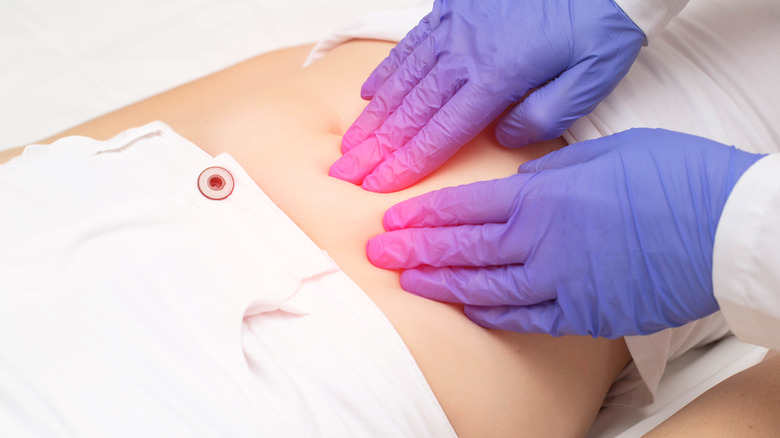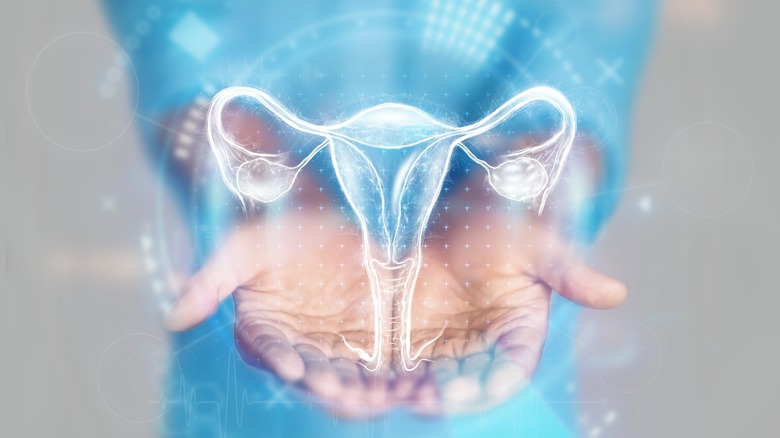How Are Ovarian Cysts Treated?
While the idea of a cyst forming on one or both of the ovaries can be alarming to women, the truth is that, in general, ovarian cysts are fairly common and usually benign (via Cleveland Clinic). The majority of cysts form due to changes in the body as a result of menstruation or ovulation. These include follicular cysts, which occur when the follicle in the ovary does not release an egg but forms a cyst instead, or corpus luteum cysts, which occur after an egg is released. Cysts such as these are known as functional cysts and tend to clear up on their own, usually within 60 days.
However, according to the Mayo Clinic, some cysts, such as dermoid cysts and cystadenomas, can create problems, growing large and potentially shifting the position of the ovaries. If this happens, it can lead to a condition known as ovarian torsion, which can prevent blood from flowing to the ovary. In addition, Healthline reports that some cysts can also rupture, leading to internal bleeding and the risk of a life-threatening infection. In these cases, medical intervention is necessary.
Treatment can depend on a few factors
Ovarian cysts are diagnosed via a gynecological exam, either by a pelvic examination or a vaginal sonogram, according to Johns Hopkins Medicine. This last exam is particularly helpful, as it can give your doctor a clear image of the ovary and the cyst, determining whether it is solid or filled with fluid.
However, there are a few factors that will determine how an ovarian cyst is treated (via Medical News Today). These include the cyst's size and appearance, the presence of any symptoms, the patient's age, and whether or not they have gone through menopause. In fact, approximately 5% to 10 % of women have surgery to remove an ovarian cyst (per the Office on Women's Health). Surgery is usually an option if the cyst does not go away even after several menstrual cycles, grows larger, or causes pain.
However, if surgery isn't required, your doctor may prescribe pain medicine, or even consider a hormonal birth control method that can help lower the chances of developing cysts. On the other hand, if a cyst is smaller than 10 centimeters, your doctor may advise a watch-and-wait approach, using ultrasounds to monitor the cyst over time (per Medical News Today). Suppose you are feeling like you may have a cyst or experiencing any symptoms, such as pain, breast tenderness, abdominal bloating, or swelling. In that case, you should see your doctor immediately and see what he or she recommends as the best method of treatment.


